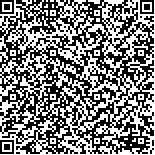下载中心
优秀审稿专家
优秀论文
相关链接
摘要

以东营市为例 ,把基于典型相关分析的方法运用于多时相遥感影像的变化检测中。对于变化阈值的确定 ,采用了一种基于贝叶斯理论的最小错误率的方法。这种方法实质上是一种非监督分类的方法 ,即不需要地面实况数据或其它先验知识 ,直接对典型相关处理后的差值图像进行分析计算得到阈值 ,使变化检测的错误率达到最小。实验结果证明了这种方法的有效性。
关键词:
变化检测 基于贝叶斯理论的最小错误率法 EM算法 变化阈值In the past few years, there has been a growing interest in the development of automatic change detection techniques for the analysis of multi-temporal remote sensing images. This paper introduces a method for multivariate change detection, which is based on the canonical correlation analysis and the orthogonal transformation. Differing from traditional multivariate change detection schemes such as the principal component analysis (PCA), this method takes two co-registered multivariate or multi-spectral satellite images covering the same geographic area typically acquired at different times as a whole random sample, and transforms two sets of random variables into a new set of random variates by using canonical transformation. To overcome the problem of lacking automatic techniques for discriminating the changed and unchanged pixels in the difference image, we propose an automatic technique based on the Bayes theory for the analysis of difference image. It assumes that the difference magnitudes comply with normal distributions. An automatic method for selection of the decision threshold that minimizes the overall change detection error probability is investigated. To perform an unsupervised estimation of the statistical terms that characterize these distributions, an iterative method based on the Expectation-Maximization (EM) algorithm is also presented. The experimental results show the fact that the presented method is exactly creditable and effective in multivariate change detection of remote sensing satellite data.

